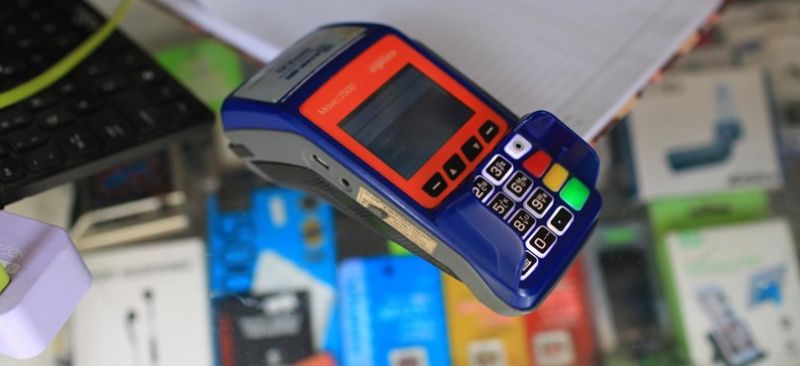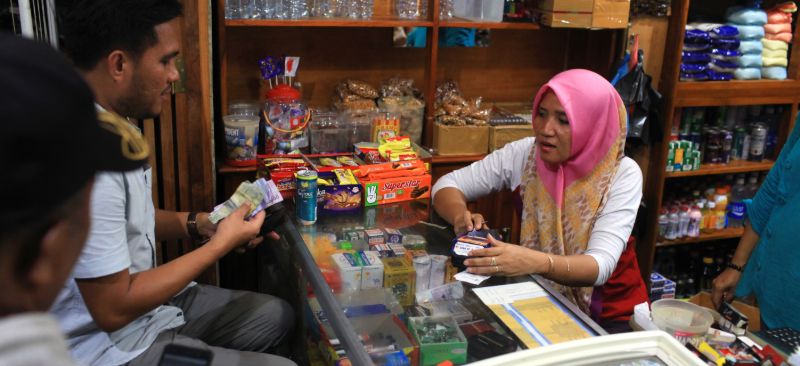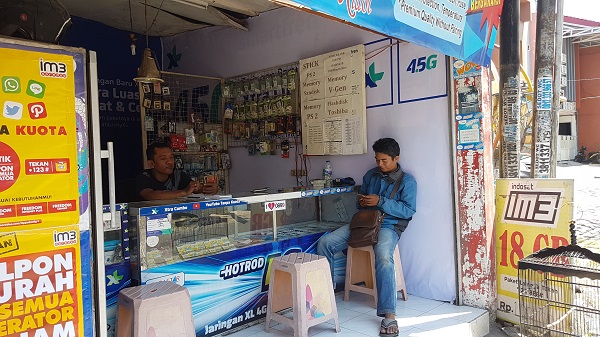 Currently, Over the Counter (OTC) transactions in Pakistan account for just over half (52%) of Branchless Banking Transactions[1] by value and less (42%) by volume. The vibrancy of OTC transactions could provide a stepping stone to mobile wallets. This, in turn, would enable the deepening of the digital financial ecosystem through advanced service offerings for saving, borrowing, and risk mitigation. Pakistan’s Financial Inclusion Strategy[2] makes this bet, relying on growth of digital transactions accounts (DTA), that is, wallet accounts, as one of the four main ‘drivers’[3] for financial inclusion, by enabling ‘access and use a range of quality payments, savings, credit, and insurance services which meet their needs with dignity and fairness’.[4] This blog seeks to provide an overview of the progress (or lack thereof) that mobile money providers in Pakistan are making towards driving mobile wallet ownership and promoting advanced usage
Currently, Over the Counter (OTC) transactions in Pakistan account for just over half (52%) of Branchless Banking Transactions[1] by value and less (42%) by volume. The vibrancy of OTC transactions could provide a stepping stone to mobile wallets. This, in turn, would enable the deepening of the digital financial ecosystem through advanced service offerings for saving, borrowing, and risk mitigation. Pakistan’s Financial Inclusion Strategy[2] makes this bet, relying on growth of digital transactions accounts (DTA), that is, wallet accounts, as one of the four main ‘drivers’[3] for financial inclusion, by enabling ‘access and use a range of quality payments, savings, credit, and insurance services which meet their needs with dignity and fairness’.[4] This blog seeks to provide an overview of the progress (or lack thereof) that mobile money providers in Pakistan are making towards driving mobile wallet ownership and promoting advanced usage
Strong Potential for Wallets – The Business Case
The recent introduction of regulations related to biometric verified OTC transactions[5] has had both positive and negative impacts. Yet for service providers, the increased cost of providing OTC services presents an additional pain-point, among other existing challenges. Because of the large investment required[6], providers are yet to provide BVS systems to over a third (38%) of agents. The rising costs of OTC also strengthen the business case for mobile wallets through cost savings on airtime distribution, greater customer loyalty, and lower commissions that result from increasingly self-initiated transactions.[7] Of course, to generate substantial savings, providers must encourage their customers to register, either independently or through agents and entice significantly more wallet customers.
 The Challenges
The Challenges
Remarkably low wallet penetration
To date, however, mobile money account ownership among Pakistanis remains very poor (0.6%), compared to wallet markets in East Africa (67% in Kenya, 53% in Tanzania, and 38% in Uganda). This is in spite of growing number of agents who offer wallet registrations (34% in 2017, up from 21% in 2014). Although opportunities to register for a wallet account have been expanding, the ability or willingness of customers to sign up still lags. As a result, the proportion of Pakistani adults with a registered mobile wallet account grew just marginally over the past three years, from 0.4% in 2013 to 0.6% in 2016. [8]
 Agent Capabilities
Agent Capabilities
Only one-third[9] of agents currently offer wallet registration. While 46% of those who do not yet have this capacity want to offer this service, many lack the necessary permissions, whereas others are yet to receive the requisite training/education from the providers. In addition to a minority of agents who offer wallet signups, customer awareness and understanding of providers’ wallet service offerings hinder wallet uptake.
Customer Understanding
Of the 60%[10] of Pakistanis with at least some awareness of the different features of the wallet, only 0.11% go on to register and use the wallet services. The top reason for not using mobile money was not seeing a need to use the service, followed by a lack of understanding of what the service is or how it can be used.
Even many existing OTC users who already use the services for person to person (P2P) transfers and/or utility bill payments gave contradictory reasons for not registering for wallet accounts. A third of OTC users (33%) felt that they have no need for a wallet account and 14% said they did not have enough funds for wallet accounts. In other words, a significant proportion of current OTC users believe that they do not need mobile wallets because they cannot identify any valuable use-cases for wallets. This is an especially serious concern for providers that seek to transition OTC users to wallets.
Agents also concur that the main reason[11] for the slow growth in mobile wallet uptake and usage seems to be a lack of awareness among customers, who either do not see or know about the use-cases and value propositions of wallets. This also explains why a significant proportion of registered accounts, about 52%[12], are still inactive.
Further education on wallets and other value-added services such as utility and insurance payments is therefore required to improve customers’ understanding of the advantages that using a wallet offers, which would, in turn, lead to increased uptake and usage. Other pull-factors will also play a critical role in attracting new customers and driving the uptake of wallet accounts. These include services like Government to Person Pauyments (G2P), such as the Benazir Income Support Payments (BISP) and Business to Person (B2P) transfers by organisations like microfinance institutions (MFIs) and other bulk payments.
Driving Uptake and Usage
Proactive Agents
Only about 40% of agents educate their customers about wallets, of which only half (21%) offer wallet registration. However, the ANA Pakistan study showed that mobile money agents who do educate customers about wallet accounts conduct 18% more wallet registration transactions and significantly more wallet cash-in (31%) and more wallet cash-out transactions (22%), than those agents who do not educate. This has the effect of boosting their own business and customer wallet take-up.
 Moreover, agents who receive induction training within the first three months of joining are significantly more likely to educate customers about wallets than those who did not receive training (45% as opposed to 36%, respectively). Providers should induct agents consistently, and highlight the value and business opportunities unlocked by educating current and potential customers on wallets and wallet-based services as part of the curriculum. They may also consider introducing incentives to encourage agents to acquire new customers.
Moreover, agents who receive induction training within the first three months of joining are significantly more likely to educate customers about wallets than those who did not receive training (45% as opposed to 36%, respectively). Providers should induct agents consistently, and highlight the value and business opportunities unlocked by educating current and potential customers on wallets and wallet-based services as part of the curriculum. They may also consider introducing incentives to encourage agents to acquire new customers.
Agents Support and Better Marketing
Providers should consider rewarding agents, especially the top performers, for their education and marketing efforts related to wallet accounts and customer acquisition. Providers could offer additional training to graduate the agents into more aggressive ‘sales agents’, with additional compensation for specific wallet opening and activity targets, so that agents receive remuneration only for active wallets. Cost reductions that result from more intensive wallet adoption and use, referenced above, could offset such remunerative efforts. Moreover, providers’ should review their Above the Line (ATL) promotional and marketing materials to ensure that they enhance mobile money awareness and build an understanding of the relevance of wallet services in daily life beyond what is available via OTC.
The Next Frontier
In order to drive the National Financial Inclusion Strategy forward, encouraging the uptake of wallets through rigorous education, promotion, and registration efforts are key to creating a sustainable ecosystem with ‘a range of quality payments, savings, credit, and insurance services’ which meet the needs of all Pakistanis. The emergence and diversification of such services may also work conversely to encourage wallet uptake further.
Beyond the current offer of merchant payments, Government to Person (G2P) such as the Benazir Income Support Payments (BISP) and Business to Person (B2P) transfers, bulk payments, meaningful savings, and the eagerly anticipated credit and insurance products would facilitate both wallet adoption and meaningful financial inclusion in the country.
[1] State Bank of Pakistan – Branchless Banking Newsletter – April to June 2017 – http://www.sbp.org.pk/publications/acd/2017/BranchlessBanking-Apr-Jun-2017.pdf
[2] Pakistan Financial Inclusion Strategy http://www.sbp.org.pk/ACMFD/National-Financial-Inclusion-Strategy-Pakistan.pdf
[3] As per Pakistan’s financial inclusion strategy, the four main drivers are: 1- Digital Transaction Accounts 2- Access Points, 3- Financial service providers 4- Financial Capability.
[4] https://www.afi-global.org/sites/default/files/publications/2017-07/FIS_GN_28_AW_digital.pdf
[5] State Bank of Pakistan – Branchless Banking Regulations – July, 2016 – http://www.sbp.org.pk/bprd/2016/C9-Annx-A.pdf
[6] A BVS Enabled Machine for OTC Transfers costs between PKR 10,000 – 15,000 (USD$ 95–142)
[7] Mobile money profitability: A digital ecosystem to drive healthy margins – https://www.gsma.com/mobilefordevelopment/wp-content/uploads/2015/11/2014_Mobile-money-profitability-A-digital-ecosystem-to-drive-healthy-margins.pdf
[8] Financial Inclusion Insights – Pakistan report 2016 – http://finclusion.org/uploads/file/Pakistan%20Wave%204%20Report%2019-July-2017(1).pdf
[9] Agent Network Accelerator 2017 – MicroSave-Helix – http://www.helix-institute.com/data-and-insights/agent-network-accelerator-research-pakistan-country-report
[10] Financial Inclusion Insights – Pakistan report 2016 – http://finclusion.org/uploads/file/Pakistan%20Wave%204%20Report%2019-July-2017(1).pdf
[11] In terms of a Relative ranking of supply side reasons for low wallet registration (as perceived by all mobile money agents) – Agent Network Accelerator 2017 – MicroSave-Helix – http://www.helix-institute.com/data-and-insights/agent-network-accelerator-research-pakistan-country-report
[12] State Bank of Pakistan – Branchless Banking Newsletter – April to June 2017 – http://www.sbp.org.pk/publications/acd/2017/BranchlessBanking-Apr-Jun-2017.pdf






